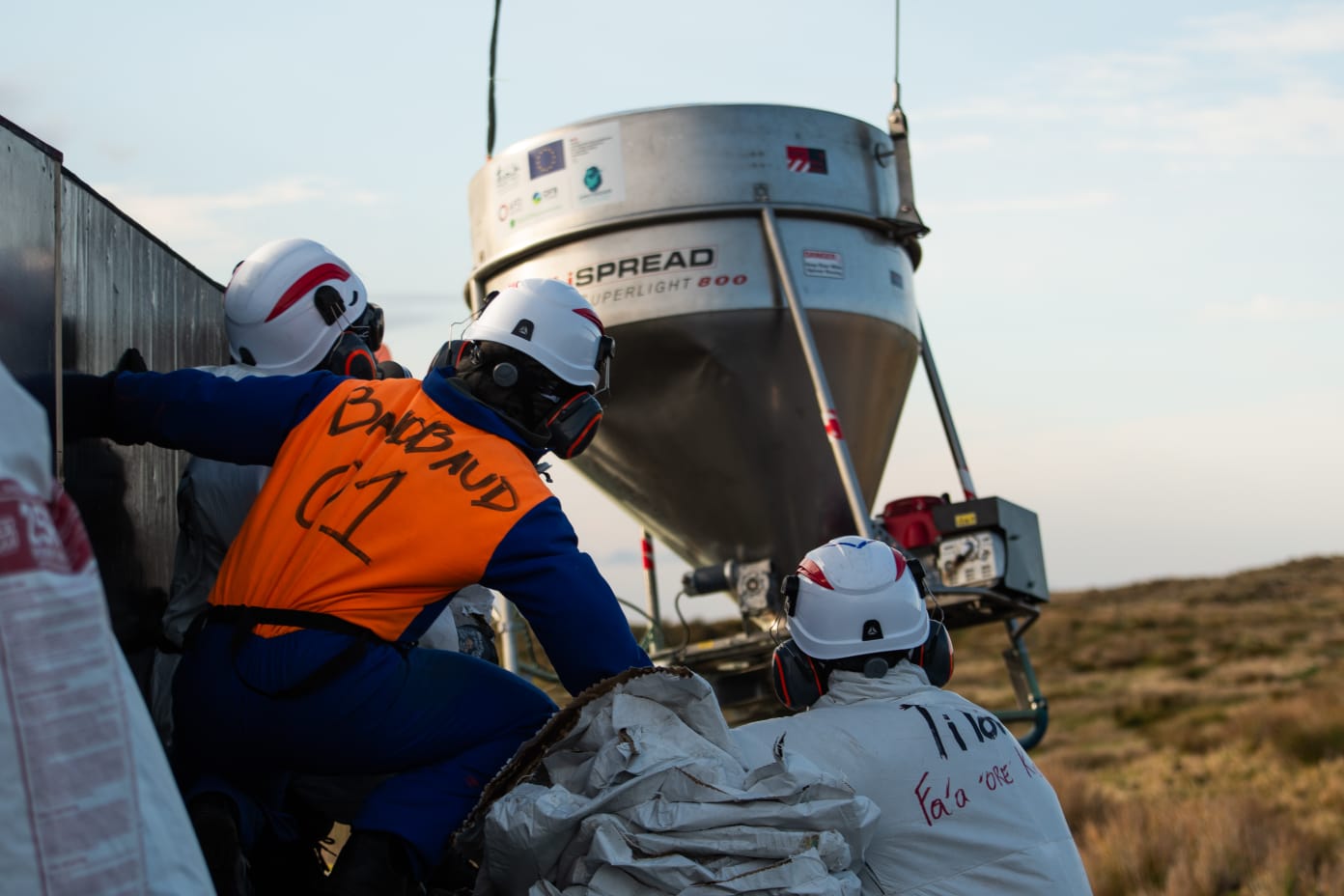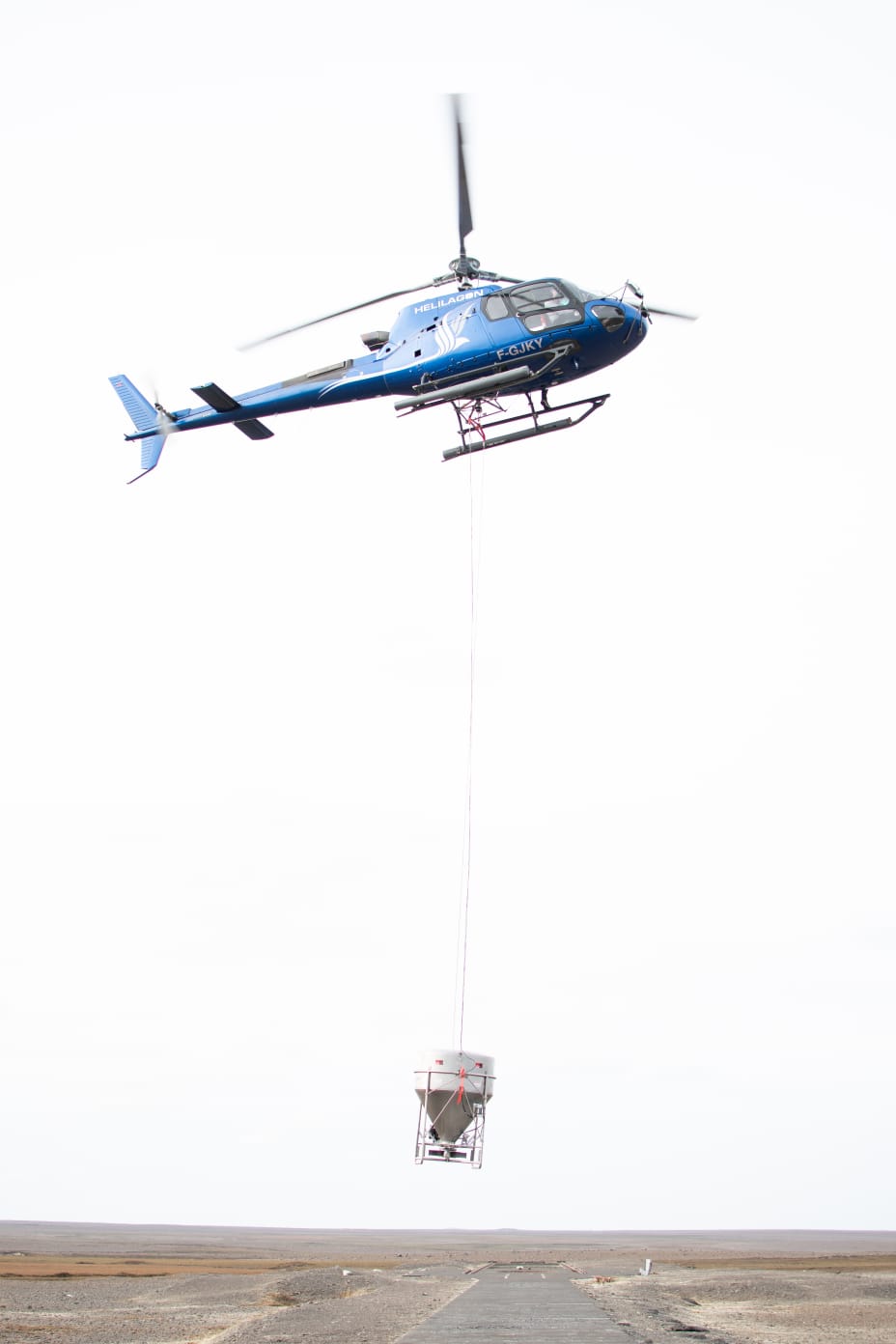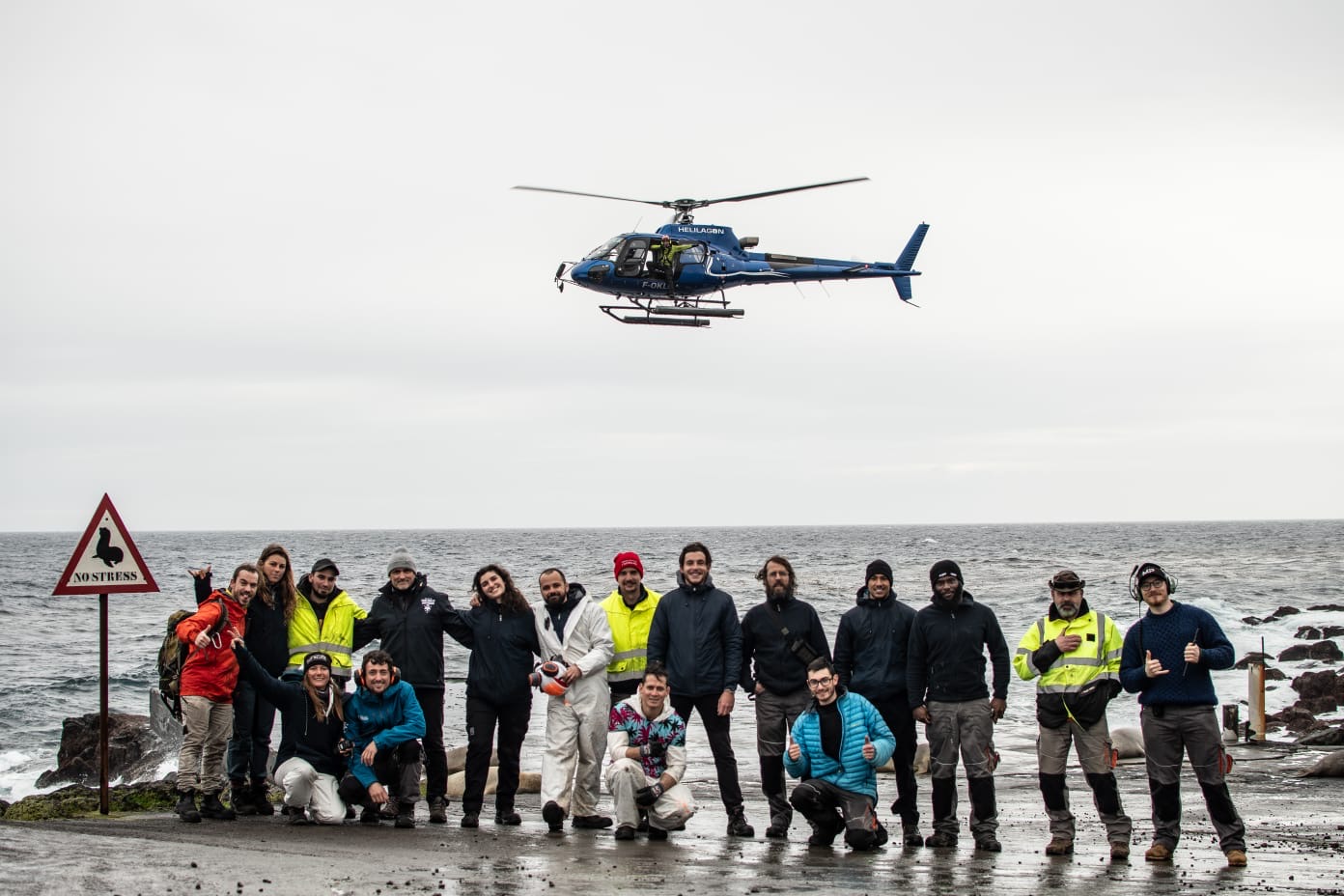 The bait-spreading bucket is lowered to the ground to be reloaded with cereal bait, photograph by Lucie Pichot
The bait-spreading bucket is lowered to the ground to be reloaded with cereal bait, photograph by Lucie Pichot
The project RECI (Restauration des écosystèmes insulaires de l’océan Indien; Restoration of Insular Ecosystems of the Indian Ocean) has announced the completion of the baiting operation to eradicate Norway Rats Rattus norvegicus and House Mice France’s sub-Antarctic Amsterdam Island.

The bait-spreading bucket is suspended below the helicopter on a long cable; photograph by Lucie Pichot
The first baiting application took place over 7-25 June 2024, dropping rodenticide-laced cereal bait over the 5800 ha island, including along the Entrecasteaux cliffs, utilizing a bait-spreading bucket suspended below a single-engine Airbus A350 B3 helicopter, known as a Squirrel. The helicopter was operated by a team from the Réunion-based company Helilagon. In addition, rodenticide bait was spread by hand around the Martin-de-Viviès scientific station, with the baiting of interiors, inside ceilings and underneath buildings and field huts.
To guarantee access to bait for all the island’s rats and mice, including any young rodents not weaned at the time of the first application, a second bait treatment commenced on 5 July and was completed on 23 July. A second manual treatment of the station buildings was also carried out during this time.

Setting up a camera trap to detect rodents on Amsterdam, photograph by Lucie Pichot
During and on completion of the eradication operation the RECI team was also involved with:
placement of biosecurity bait and monitoring stations,
deploying camera traps;
controlling alternative food resources;
monitoring bait availability by the establishment of quadrats distributed over the island; and
dismantling and cleaning up the load sites.

The RECI and Helilagon teams gather after the completion of the eradication operation, photograph by Lucie Pichot
The eradication team and all the TAAF and Helilagon equipment were retrieved on 19 August after four months on the island by the French Antarctic vessel Marion Dufresne during a five-day visit. Two field assistants have stayed on the island to set up a biosecurity detection network and to monitor camera traps around the island for signs of any surviving rodents. Fabrice le Bouard, Restauration des écosystèmes insulaires de l’océan Indien, has informed MFM News that so far the signs are promising, with no live rodents being detected on the island in the first couple of weeks after the eradication attempt. However, as is the standard practice, a two-year period with no signs of rodents is required before Amsterdam can be declared free of its rats and mice.
Information from Fabrice le Bouard of RECI and the Facebook page of Terres australes et antarctiques françaises (TAAF). Photographs by Lucie Pichot, TAAF.
Co-published by the Mouse-Free Marion Project.
John Cooper, Emeritus Information Office, Agreement on the Conservation of Albatrosses and Petrels, 19 September 2024

 Español
Español  English
English  Français
Français